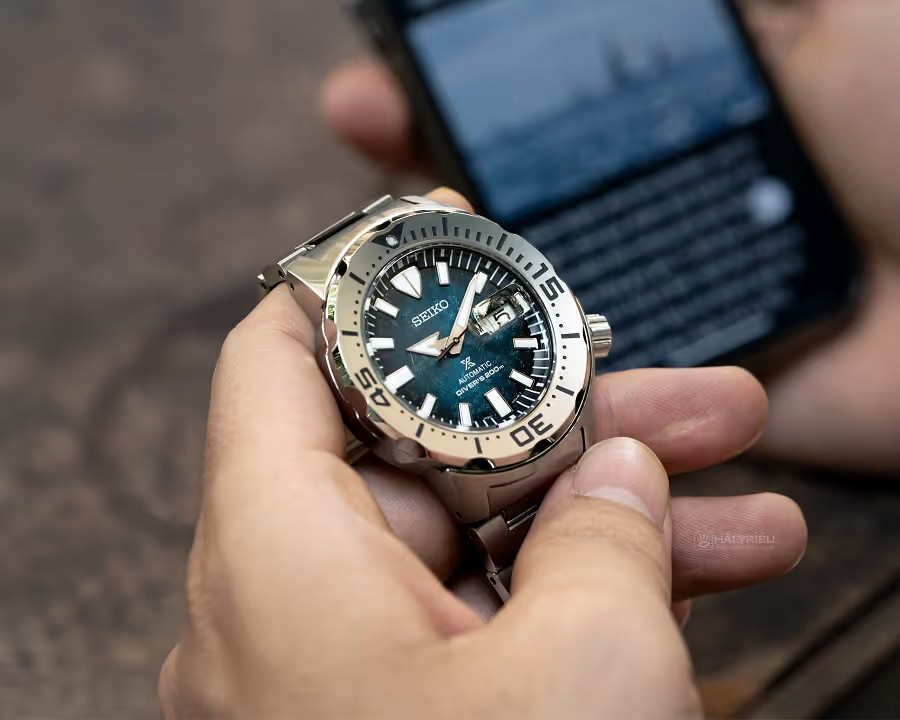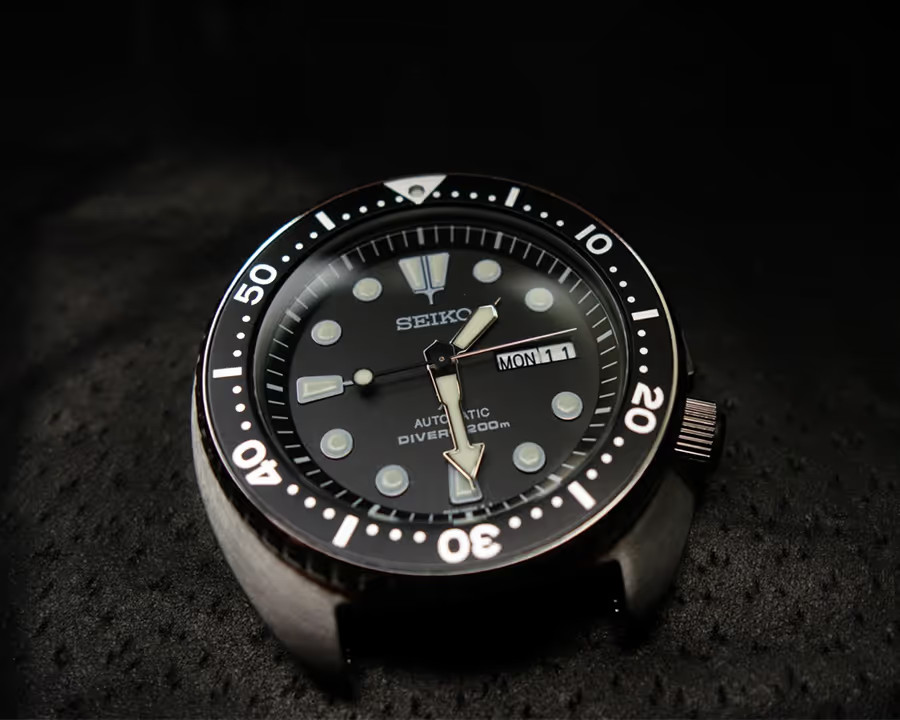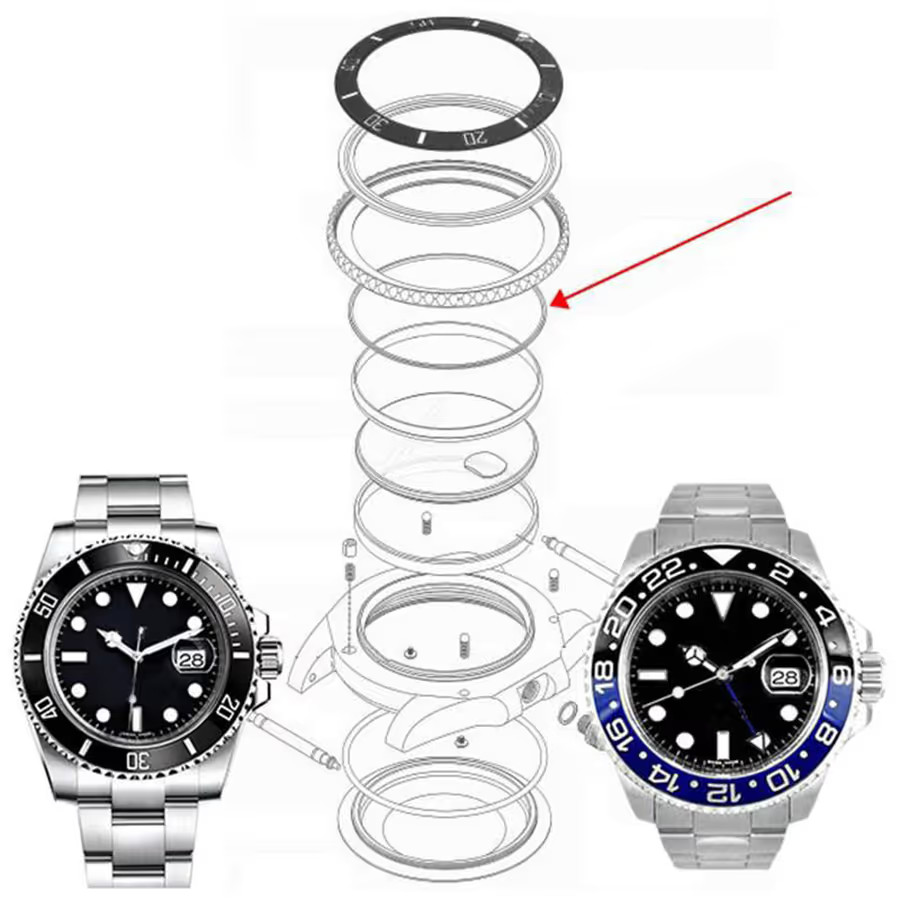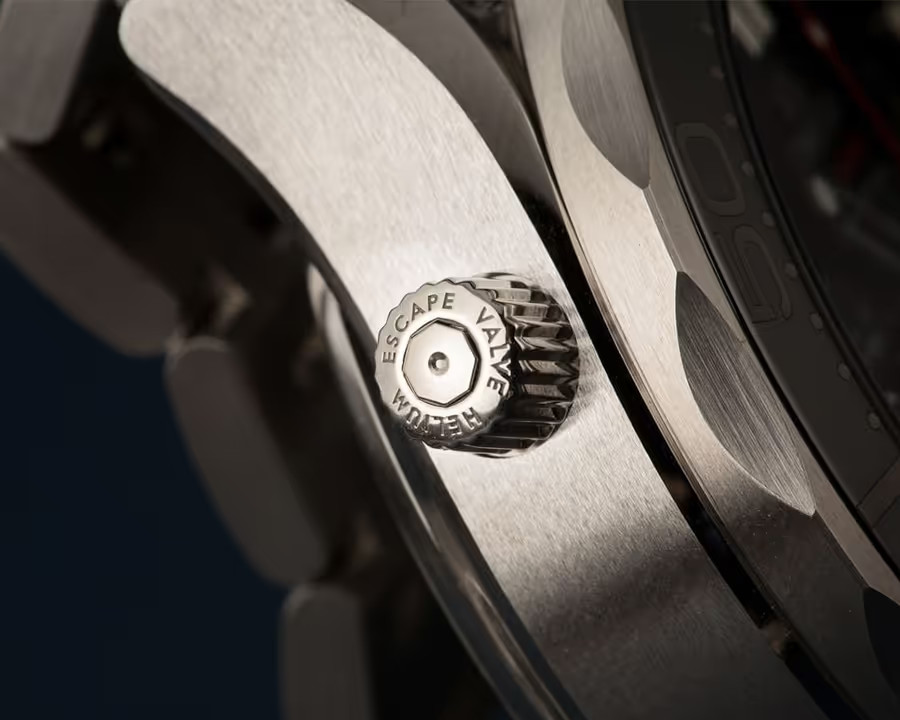Despite owning a 20ATM waterproof watch, many people still don’t fully understand what they signify. Here’s an overview to help you understand better.
What is a 20ATM waterproof watch?
20 ATM is an indicator of special waterproof capability: suitable for diving (shallow diving, snorkeling) but not suitable for use in environments with mixed gases like helium.
20 ATM or 20 BAR is equivalent to a pressure level of 200m, meaning it can withstand pressure equivalent to a depth of 200m.
This means that a 20ATM watch surpasses the following waterproof levels (meaning it can be used in the following environments):
3ATM: handwashing, light rain, splashes. 5ATM: suitable for showering or use in humid environments. 10ATM: swimming, snorkeling.
A common misconception: ATM or the watch’s waterproof ability is not represented in meters. For example, 20ATM doesn’t mean the watch can be taken to a depth of 200 meters, but it indicates the pressure level the watch can withstand without water ingress.
Where is the 20 ATM indication displayed?
Usually, it will appear in the following locations:
Dial – Caseback of the dial

More information: 100+ models replica watches at Mon Luxury?
Common standards on 20ATM waterproof watches
Dive watches adhere to different rules. So, what standards does a 20ATM waterproof watch meet?
ISO 22810 Standard (WR200m)
This is a general standard for waterproof watches introduced in 1990 and designated specifically for each brand.
To meet this standard, the watch must be tested for pressure, time, water temperature, and many other parameters.
The watch must undergo simulation stages to test, revealing all weaknesses, leaks:
Resistance test: Soak at a depth of 10cm for 1 hour. Resistance test of parts’ “resistance”: under the same conditions and adding a force of 5N perpendicular to the crown/button for 10 minutes. Condensation test: Place the watch on a heated plate at a temperature of 40 to 45°C until the watch reaches the temperature of the heated plate (usually takes about 10 to 20 minutes). Drop water with a temperature of 18 to 25°C onto the crystal. Wipe dry after 1 minute. The watch will be eliminated if there is condensation on the inside of the crystal. Heat resistance test: continue to soak at a depth of 10cm but will switch to a different temperature every minute, respectively: 40 °C, 20 °C, and 40 °C. Watches showing signs of water ingress or condensation will be eliminated. Water pressure resistance test: immerse the watch in a rated pressure vessel for 1 minute. Then gradually reduce the pressure level for 1 minute. If it does not pass, the watch will be eliminated. Air pressure resistance test: keep the watch at a pressure level exceeding 2BAR. The air flow displayed should be under or equal to 50 μg/minute, indicating a pass.
In reality, a watch’s “survival” depends on many factors such as water depth, temperature, material deterioration, and age.

ISO 6425 Standard (DIVER’S 200m)
You may see some 20ATM waterproof watches with the word “Diver” before the depth value without specifying 20ATM. This means the watch meets ISO 6425 standards.
ISO 6425 is a standard introduced in 1996. A 20ATM waterproof watch meeting this standard means it has been tested in a static environment under 125% of the rated water pressure. This means that for a rating of 200m, the watch is waterproof if submerged at 250m in still water.
Not every watch brand meets this standard because compliance is voluntary, and the cost is borne by the manufacturer.
The testing stages of the ISO 6425 standard are as follows:
Underwater function test: immerse in water at a depth of 30cm (or 2cm) at a temperature of 18 to 25°C for 50 hours. Condensation resistance test: this step is also performed similarly to ISO 22810 standard. Resistance against pressure of the crown and other devices: place the watch under 125% pressure of the rated pressure for 10 minutes (specifically, for 200m, it is placed at a pressure equivalent to 250m), using a force of 5N and keeping it for 10 minutes. Then check if the watch leaks through the crown. Water tightness test: immerse the watch in a closed tank with a depth of 125% of the rated pressure for 1 minute and maintain it for 2 hours. Then gradually decrease the pressure to 0.3 BAR for 1 minute, maintaining it for 1 hour. Then remove the watch and wipe it dry, ensuring no water ingress or condensation. Heat resistance test: continuously transfer the watch between two water tanks: 5°C and 40°C for 10 minutes each.
Mechanical dive watches also have slightly different requirements:
Dive time indication (usually on the rotating bezel) for users to read the dive time. Minute markers, hour markers, and hands must be clear and readable in low-light conditions (usually equipped with luminous material). Magnetic resistance to 4,800Ampe, with an accuracy deviation of only +-30s/day.

More on: 100+ High-end Fake Rolex watch at Mon Luxury?
Interesting facts about 20ATM waterproof capability
Tests that dive watches must undergo
Through the mentioned standards, it can be seen that 20ATM waterproof watches or dive watches must undergo countless tests such as:
Underwater operation: placed under a water level of 30cm for 50 hours at a temperature of 18 to 25°C. Condensation reaction: placed on a hot plate (40 to 45°C) until reaching the temperature of the hot plate. Drop a drop of water (18 to 25°C) on the dial, then wipe it clean after 1 minute and check for condensation. Functionality test: Place the watch at a depth of 125% of the published rating, where 20m is placed at 25m, apply a force of 5N and keep it for 10 minutes. Then check if the watch leaks through the crown. Waterproof and pressure resistance: Place the watch in a closed tank with a depth of 125% of the published rating for 2 hours. Sudden decrease by 0.3BAR in 1 minute and maintain for 1 hour. Then remove the watch and check. Heat resistance: continuously transfer the watch between two water tanks: 5°C and 40°C for 10 minutes each.
The watch must go through each stage, and if it fails, it will be eliminated from the next test.
How dive watches resist water ingress
To resist water, watches use friction and compression mechanisms to prevent water ingress through O-ring seals. They are placed in:
Stainless steel case and crystal: Keep water from seeping into the crystal. Caseback and case: prevent water from leaking through cut surfaces (usually removed for maintenance or battery replacement). Under the crown/button
O-rings are also placed at the crown position to prevent water from entering the winding stem. If it has a chronograph function, it will also be placed on the pushers. These points are prone to infiltration and damage, affecting operation.
O-ring seal on a dive watch
However, after a period of use, you should replace them because they may become worn, reducing waterproof effectiveness.
In addition, the operating mechanisms of the components also contribute to preventing water ingress:
Crown/setting: a screw-down crown instead of a push-pull one as in regular models. The screw-down structure limits the accidental large water pressure that might push them out. Together with the protective seal, the watch is better protected. Screw-down case back also ensures tightness when exposed to harsh underwater environments. Additionally, watches must be made of high-quality materials to withstand water pressure:
Sapphire crystal with high hardness, good scratch resistance. Stainless steel with acid resistance properties. Titanium: lightweight, durable, and hypoallergenic. Ceramic: high scratch resistance and aesthetic appeal.

How dive watches resist Helium gas
A Helium Release Valve may be a part of a dive watch, but it’s a consideration when you need professional operation.
This valve is usually located opposite the winding crown with the purpose of releasing accumulated helium gas inside the watch case during diving. Without this valve, the helium gas pressure accumulation during diving would cause the watch to burst when returning to the surface.
However, this release valve will be a weak point and may cause water leakage if accidentally opened in an air environment (if the valve cap is not screwed on) or due to technical malfunctions.
Limitations of dive watches
20ATM waterproof watches also have drawbacks:
Limited lifespan: usually after 3-5 years of use or after each battery replacement, you should have the watch tested for waterproofing. Quick wear of setting: when in continuous contact with saltwater and pressure, parts like the crown may be damaged, causing leakage. Temperature: dive watches are susceptible to temperature, especially sudden changes from high to low or vice versa. This can cause the O-ring to shrink or expand, leading to leaks.
Conclusion
I hope this article has helped you understand better the significance of 20ATM on a watch face and their waterproof capabilities. Waterproof watches are not just a utility but also a symbol of your style and personality. Choose a watch that suits your needs and preferences, and make sure to maintain it properly for optimal performance.





